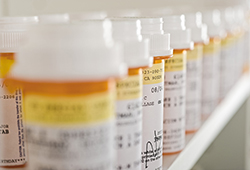 Director Katherine Vidal of the U.S. Patent and Trademark Office (“USPTO”) issued a precedential review decision with respect to the interpretation of multiple dependent claims, in a case of first impression before the Patent and Trial Appeal Board (“PTAB”). In the review of the PTAB’s final written Decision and Order, the Director modified it consistent with her determination of the treatment of multiple dependent claims, which are claims that refer to and incorporate by reference more than one other claim.
Director Katherine Vidal of the U.S. Patent and Trademark Office (“USPTO”) issued a precedential review decision with respect to the interpretation of multiple dependent claims, in a case of first impression before the Patent and Trial Appeal Board (“PTAB”). In the review of the PTAB’s final written Decision and Order, the Director modified it consistent with her determination of the treatment of multiple dependent claims, which are claims that refer to and incorporate by reference more than one other claim.
More specifically, at issue in the inter partes review captioned, Nested Bean, Inc. v. Big Beings Pty Ltd., was the interpretation of 35 U.S.C. § 112, fifth paragraph, which is the controlling statute for multiple dependent claims. The Patent Owner contended that the statute requires the PTAB to consider the patentability of each claim referenced separately. In contrast, the Petitioner argued that if any claim of a multiple dependent claim is unpatentable, then the entire claim is unpatentable. For the reasons that follow, the Director agreed with the Patent Owner.
35 U.S.C. § 112, fifth paragraph, states in relevant part, “[a] multiple dependent claim shall be construed to incorporate by reference all the limitations of the particular claim in relation to which it is being considered.” The related Codified Rule, 37 C.F.R. § 1.75(c) states, in relevant part, “[a] multiple dependent claim shall be construed to incorporate by reference all the limitations of each of the particular claims in relation to which it is being considered.” With other statutes and Rules considered, the Director reasoned that the plain language of 35 U.S.C. § 112, fifth paragraph, conveys that a multiple dependent claim is the equivalent of several single dependent claims.
In addition to relying upon the applicable statute and Rules, the Director also considered Federal Circuit case law, legislative history, and USPTO procedure.
More specifically, with respect to precedent, neither party identified a judicial or administrative decision addressing the issue at hand. However, the Director found that Federal Circuit cases identified were supportive of the Patent Owner’s position.
The Director found that USPTO guidance and procedures further supported the Patent Owner’s interpretation. For example, the Manual for Patent Examining Practice (M.P.E.P.) advises examiners that “a multiple dependent claim must be considered in the same manner as a plurality of single dependent claims.” M.P.E.P. § 608.01(n)(I)(B)(4).[1] Further, as the Director found, the USPTO claim fee structure is such that applicants must pay separately for each multiple dependent combination, e.g., for a multiple dependent claim that refers to three independent claims, the USPTO charges for three dependent claims.
Thus, after reviewing the PTAB’s Decision and the relevant information, Director Vidal acknowledged that it was an issue of first impression before the Board. And based on the plain meaning of the statute, 35 U.S.C. § 112, fifth paragraph, requires that the patentability of a multiple dependent claim be considered separately with respect to each claim to which it refers. Accordingly, the Director’s Review Decision modifies the PTAB’s final written Decision and Order consistent with her interpretation of determining the patentability of multiple dependent claims, each separately as if multiple single dependent claims.
The Director’s Review Decision clarifies the interpretation of U.S. patents containing multiple dependent claims and determining the patentability thereof. In particular, a patentee now knows that each claim of a multiple dependent claim should stand or fall by itself, independent of the invalidity of other dependent claims of the same multiple dependent claim.
[1] Eighth Ed., Rev. 7 (July 2008), which was the version in effect as of the earliest priority date of the relevant patent.
 The U.S. Food and Drug Administration (FDA) recently issued General Considerations for Animal Studies Intended to Evaluate Medical Devices – Guidance for Industry and Food and Drug Administration Staff (fda.gov). Following a 2015 draft guidance and replacing a 2010 guidance focused on animal studies for cardiovascular devices, this guidance document identifies general considerations for animal studies intended to provide evidence of safety, including performance and handling, in device premarket submissions “when a suitable alternative to an animal study is not available.” Among other topics, the guidance provides recommendations related to personnel credentials, selecting an appropriate animal model, testing facility selection, and how to prepare an animal study report for premarket submissions to FDA. The Agency encourages sponsors with specific questions on an animal study, including the animal model selected, or compliance with FDA’s Good Laboratory Practice (GLP) regulations, or who seek to use a non-animal testing method, to request feedback from FDA through the Q-Submission process.
The U.S. Food and Drug Administration (FDA) recently issued General Considerations for Animal Studies Intended to Evaluate Medical Devices – Guidance for Industry and Food and Drug Administration Staff (fda.gov). Following a 2015 draft guidance and replacing a 2010 guidance focused on animal studies for cardiovascular devices, this guidance document identifies general considerations for animal studies intended to provide evidence of safety, including performance and handling, in device premarket submissions “when a suitable alternative to an animal study is not available.” Among other topics, the guidance provides recommendations related to personnel credentials, selecting an appropriate animal model, testing facility selection, and how to prepare an animal study report for premarket submissions to FDA. The Agency encourages sponsors with specific questions on an animal study, including the animal model selected, or compliance with FDA’s Good Laboratory Practice (GLP) regulations, or who seek to use a non-animal testing method, to request feedback from FDA through the Q-Submission process. In a letter dated March 21, 2023, the National Institutes of Health (“NIH”) again refused the request of petitioners to exercise march-in rights under the Bayh-Dole Act to control the price of a drug. Here, as before, the NIH found that the statutory criteria for the use of march-in rights were not satisfied by the petitioners.
In a letter dated March 21, 2023, the National Institutes of Health (“NIH”) again refused the request of petitioners to exercise march-in rights under the Bayh-Dole Act to control the price of a drug. Here, as before, the NIH found that the statutory criteria for the use of march-in rights were not satisfied by the petitioners. Director Katherine Vidal of the U.S. Patent and Trademark Office (“USPTO”) issued a precedential review decision with respect to the interpretation of multiple dependent claims, in a case of first impression before the Patent and Trial Appeal Board (“PTAB”). In the review of the PTAB’s final written Decision and Order, the Director modified it consistent with her determination of the treatment of multiple dependent claims, which are claims that refer to and incorporate by reference more than one other claim.
Director Katherine Vidal of the U.S. Patent and Trademark Office (“USPTO”) issued a precedential review decision with respect to the interpretation of multiple dependent claims, in a case of first impression before the Patent and Trial Appeal Board (“PTAB”). In the review of the PTAB’s final written Decision and Order, the Director modified it consistent with her determination of the treatment of multiple dependent claims, which are claims that refer to and incorporate by reference more than one other claim. For the first time in decades, the Supreme Court will consider patent law’s “enablement” requirement, in Amgen Inc. v. Sanofi. That requirement is often a key point in litigation when a patent claims a class of novel compounds or antibodies. In the oral argument on March 27, the Supreme Court will examine the Federal Circuit’s holding that patentees must disclose enough information to “enable” people of ordinary skill in the relevant art to “reach the full scope” of the claimed invention. In this day-after webinar, litigators from Goodwin’s Supreme Court and IP Litigation practices will recap the argument and explain what it could mean for the future of the enablement requirement.
For the first time in decades, the Supreme Court will consider patent law’s “enablement” requirement, in Amgen Inc. v. Sanofi. That requirement is often a key point in litigation when a patent claims a class of novel compounds or antibodies. In the oral argument on March 27, the Supreme Court will examine the Federal Circuit’s holding that patentees must disclose enough information to “enable” people of ordinary skill in the relevant art to “reach the full scope” of the claimed invention. In this day-after webinar, litigators from Goodwin’s Supreme Court and IP Litigation practices will recap the argument and explain what it could mean for the future of the enablement requirement.
 On February 14, 2023, the U.S. Department of Health and Human Services (HHS) published a
On February 14, 2023, the U.S. Department of Health and Human Services (HHS) published a